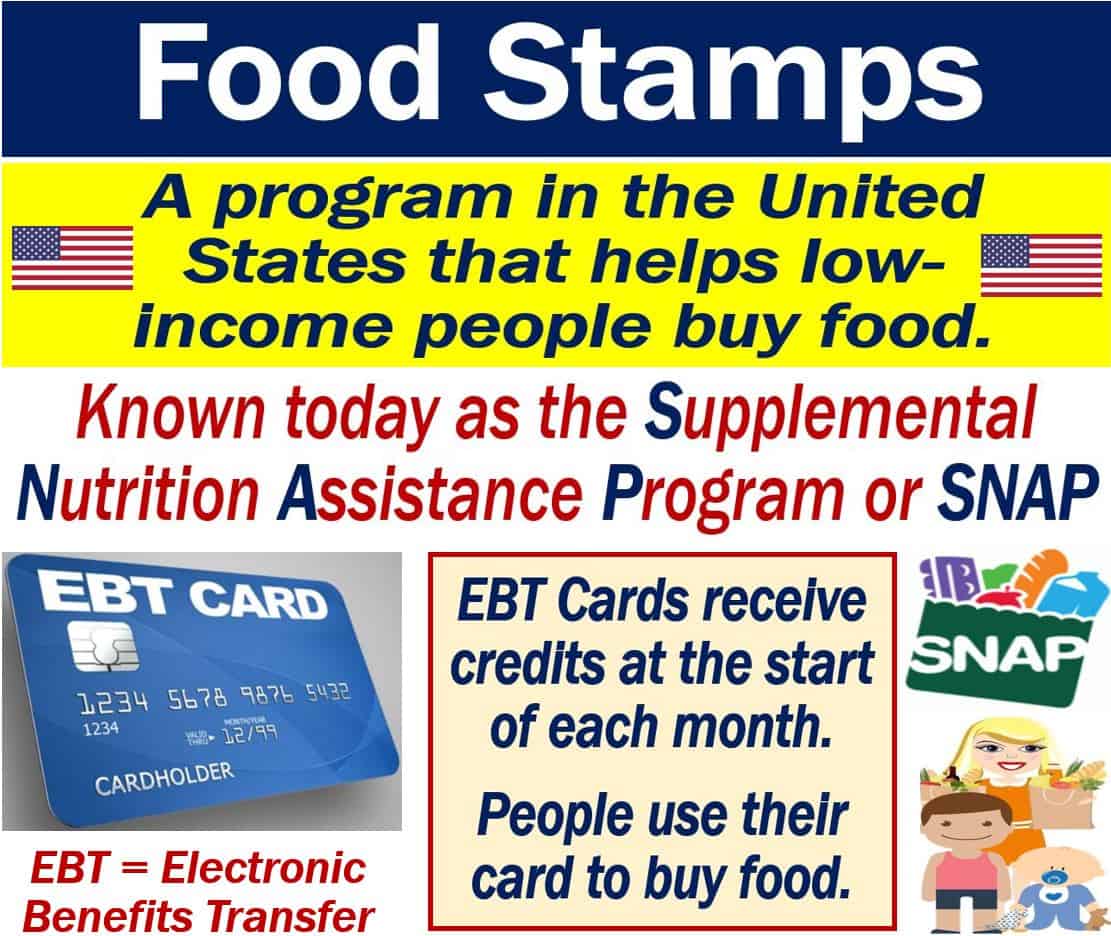Food stamps form part of a US federal assistance program for low-income individuals and households. Eligible people receive money each month. However, they can only use this money to buy food. The government credits an EBT card, i.e., debit card, each month. EBT stands for Electronic Benefits Transfer.
Cardholders can subsequently use their cards to buy food at stores that accept the stamps.
‘Food stamps’ is the old term in the US. Today, the government calls the program SNAP. SNAP stands for Supplemental Nutritional Assistance Program.
Other countries have equivalent programs for low-income households. In France, they have numerous vouchers that people can use as cash. The United Kingdom, Italy, and other EU nations also have similar schemes.
The term ‘Food Stamps’ may also refer to the stamps on ration books in times of war.
This article focuses on the term when it means a program to help low-income Americans.
GettingFoodStaamps.org says the following regarding SNAP Food Stamps:
“SNAP, the Supplemental Nutrition Assistance Program, is the program formerly known as food stamps. It is a federal nutrition program that helps you stretch your food budget and buy healthy food.”
“SNAP benefits can be used to purchase food at grocery stores, convenience stores, and some farmers’ markets and co-op food programs.”

Food stamps – a nutrition program
The SNAP scheme is not a welfare cash assistance program. It is a nutrition program. In other words, it is not a scheme to help lower-income people pay their non-food bills.
The US government calls the welfare cash assistance program TAFDC. TAFDC stands for Transitional Aid to Families with Dependent Children.
To be eligible to get SNAP Food Stamps, Americans do not need to be receiving TAFDC.
The US Department of Agriculture (USDA), under the FNS, administers the federal aid program. FNS stands for the Food and Nutrition Service. However, each US state’s division of Children and Family Services or Social Services distributes the aid.
The program forms part of what we call the Welfare State. Welfare State is a system in which the state undertakes to protect lower-income households.
SNAP costs
In the year 2016, the US government spent $70.9 billion on SNAP Food Stamps. Approximately 14% of the country’s population, i.e., 44.2 million people, received the financial aid.
Recipients received on average $125.51 per person per month. During the Global Financial Crisis of 2007/8 and the Great Recession that followed, the number of beneficiaries increased significantly. Consequently, total costs rose too.
Since peaking in 2013, costs have been declining.
A household must meet certain requirements to be eligible for food stamps and receive benefits. If an applicant’s State agency determines that they are eligible, they will receive benefits back to the day they first applied.
The USDA has a Pre-Screening Tool that helps determine whether you are eligible. The Tool is not an application form. If you want to apply, you need to do so at your local SNAP Office.
Video – What are SNAP Food Stamps?
This AJ+ video explains what Food Stamps are. Did you know that one fifth of American children depend on these stamps?
